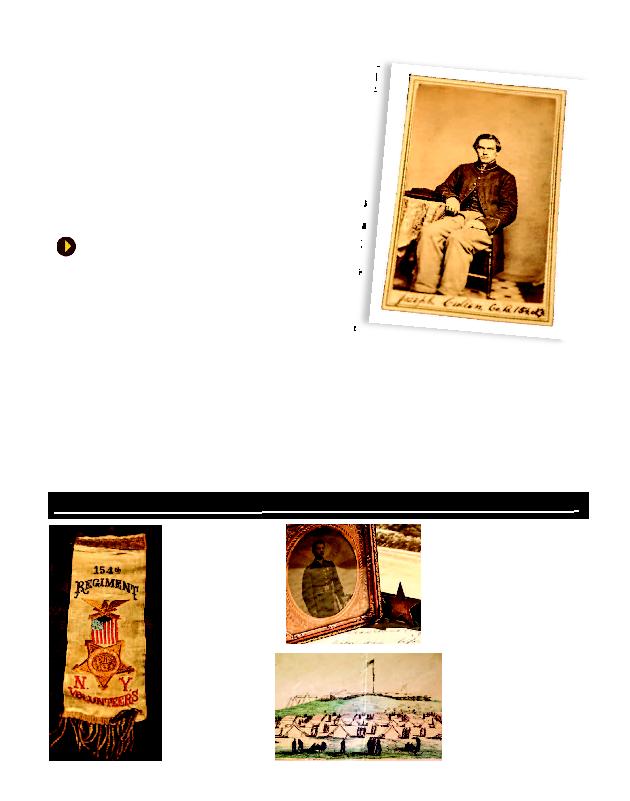
he continues to do.
large portion of documen-
tary elements, which in-
members of the regiment.
terial to make it available in digital for-
mat, Frank added.
able on the Internet to make access
easier for researchers," said Frank.
"Meanwhile, the entire collection is
available for research by the university
and wider communities by appoint-
ment."
many of his artifacts, which largely
consist of letters, diaries and photo-
graphs.
displayed in an exhibition in the The-
cent to the atrium, the Paul and Toni
Branch Gallery and the Front Gallery.
The exhibition opened Aug. 1 and
closes Nov. 15, at which time the
items will be returned to Dunkel-
man. She said museum officials
hope to include the exhibit on mu-
seum tours.
nual reunion of the descendants
of the 154th regiment, which was
held at the university.
Buffalo band Rush the Growler
performed musical pieces
ten by members of the 154th
regiment.
said of his work. "I like to think
of this (the 154th regiment) as a prism
through which I examine the Civil War,
and now other people can do the
same."
search material -- will be donated to
the university.
lection, visit his website at www.hard-
tackregiment.com.
born May 16, 1838, in Upton,
Nottinghamshire, England.
At age 21, he enlisted at Lit-
tle Valley to serve three years
in the 154th. He was cap-
tured in action March 27,
1865, near Snow Hill, S.C.,
and paroled May 5. Cullen
mustered out June 29, 1865,
in New York City.
Twentieth Corps star badge (also
pictured next to the frame). Pho-
tography evolved rapidly during
the Civil War Era. Daguerreotypes,
ambrotypes and ferrotypes (tin-
types) were superseded by photo-
graphs produced by the wet-plate
process, which allowed for dupli-
cates to be made.
the regiment was
manufactured by F.
Brueschwyler of
Salamanca. Veter-
ans of the 154th
New York reunited
in the postwar years
at meetings of local
posts of the Grand
Army of the Repub-
lic -- the greatest
Union veterans or-
ganization -- and
at annual regimen-
tal reunions.
Seward, Va., home to his family
in Allegany. Wheeler was cap-
tured at Gettysburg and died as
a POW in Richmond. Louis
Rosenthal of Philadelphia pro-
duced this and other prints in
1862 depicting regimental
camps near Washington, D.C.